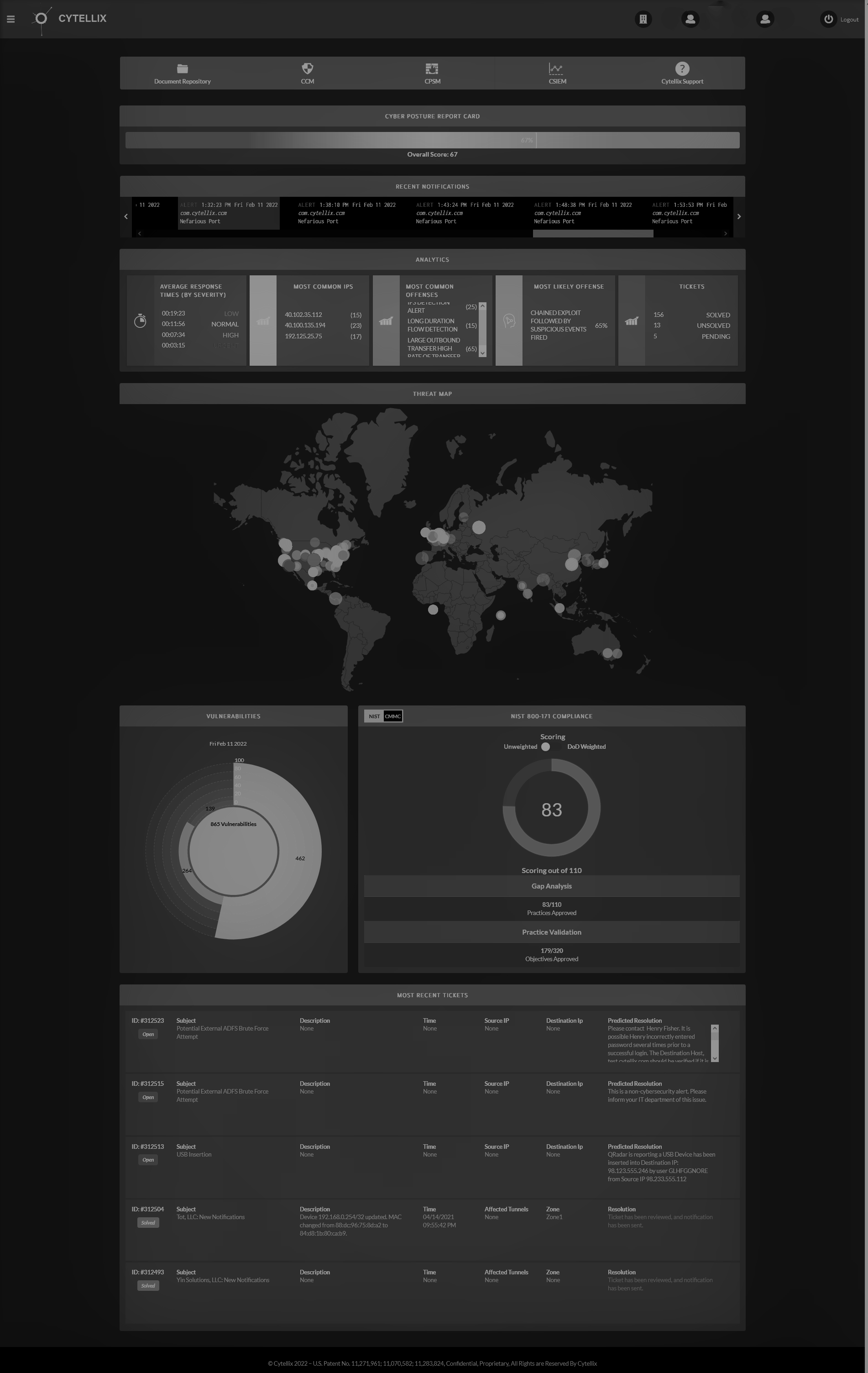MSP SPOTLIGHT: Go Beyond Baseline Security.

94% of MSP clients say they would switch MSPs for a better Cybersecurity solution1.
Introduction
As an MSP, you serve a crucial role as a technology partner to small and medium-sized businesses (SMBs), giving them the peace of mind that their business is running efficiently. However, the evolving threat landscape and required digital initiatives have increased the exposure of SMBs to cyber risks, necessitating a higher level of protection, one they may not even realize they need. This blog will explore the challenges MSPs face in providing holistic cybersecurity support to their SMB clients and discuss how a programmatic-optimized approach can help bridge the gap, ensuring enterprise-level protection without breaking the bank for SMBs, while adding revenue opportunities for MSPs.
Current MSP Model
MSPs are indispensable for SMBs, offering valuable IT services and tech strategies that give them the luxury to focus on their core business functions. As cyber threats become more sophisticated, SMBs find themselves in the crosshairs of cybercriminals. In response, they turn to their trusted MSP partners for support and protection. Innovative MSPs are meeting this challenge head-on, offering many of the core cybersecurity technologies as a baseline. But even the most diligent efforts present cost and execution challenges. MSPs have an opportunity to expand their services for SMBs and amp up the level of protection. Increased complexities in the threat landscape along with mounting compliance regulations and disparate technologies have left MSPs in information overload on knowing how best (and easily) they can bring those services to market for their customers.
What are SMB clients asking for?
SMBs, like larger enterprises, face a constant barrage of cyber threats and often must adhere to compliance requirements. In fact, the impact of cyber attacks as a percentage of revenue for SMBs is actually larger than enterprises. They also face exactly the same challenges as enterprises; limited budgets, lack of resources, and a shortage of specialized expertise. This leaves SMBs vulnerable to regulatory fines and a prime target for cyber attacks. For instance, according to the Ransomware Taskforce businesses with fewer than 500 employees were hit by 70% of the ransomware attacks in 2021.)
Given the maturity of enterprise cyber programs in today’s landscape, hackers are setting their sights on SMBs as they will likely be easier to penetrate, not to mention having more at stake for a breach and possibly more likely to give in to demands. As these attacks are proliferating, SMBs are left asking “How do I manage my cyber risk without breaking the bank?”
2 Distinct, But Interconnected Sides of the Coin
Much like enterprises, and as noted above, SMBs not only have threats to contend with but also adherence to compliance mandates. Regulatory compliance is oftentimes more critical for an SMB depending on their industry or how they fit into part of a supply chain, for example, if they are doing business with the DoD and must comply with CMMC. They typically would need a divide-and-conquer approach (with an already small team) to handle compliance readiness and threat management as two distinct initiatives. This adds an additional strain on already sparse resources and skill sets, plus added tech investments to support both sides of that coin. An integrated approach to Governance, Risk Management, and Compliance (GRC) and Managed Detection and Response (MDR) or Extended Detection and Response (XDR) both from a programmatic and tech perspective can be much more advantageous to any organization, SMB or otherwise.
MSPs Face Challenges as Well
MSPs, while committed to providing cybersecurity support, encounter their own set of challenges. They manage multiple clients with diverse complexities related to threats, attacks, and compliance requirements. Their current approach often relies on point solutions such as endpoint security, firewalls, identity management, and compliance tools. However, these fragmented tools offer only a patchwork stopgap solution, are expensive to maintain, and are difficult to scale. Moreover, disparate tools do not provide the holistic visibility required to assess their clients' overall security posture and compliance status.
MSPs are left grappling with critical questions:
- What should our first action be in response to a cyber incident?
- What specific cyber and compliance pain points are our clients facing?
- Where are the security and compliance gaps in our clients' infrastructure?
- How can the limited resources of SMBs be leveraged to achieve the best outcomes (after all, great security programs require action on the customer’s part!)?
- Where are their security/compliance gaps?
- How can we help to reduce their cyber/compliance risk…?
Time to Rethink: How can we better serve our SMB clients?
To address the challenges faced by SMBs and MSPs alike, a paradigm shift is necessary. Instead of relying solely on point solutions, MSPs should adopt a programmatic approach to managed services. This approach offers a multitude of benefits, including:
Better Visibility and Enhanced Protection: A programmatic approach allows you to gain comprehensive visibility into your clients' network and security environment, enabling you to offer better protection against cyber threats.
Reducing Cyber and Compliance Risk: By gaining a holistic view of your clients' infrastructure, you can clearly and easily isolate gaps – and address how to close them. You can identify vulnerabilities, provide actionable insights, and help your clients implement effective cybersecurity strategies.
Increasing Bottom-line Revenue: Understanding the specific gaps and requirements of your clients allows you to streamline workloads and offer tailored services. This, in turn, leads to increased revenue and long-term client satisfaction.
Gaining a Competitive Edge: Adopting an advanced cybersecurity approach will set you apart from your competitors. Clients are more likely to choose MSPs that can provide comprehensive protection and strategic guidance, and approach cyber risk from both a business and technical lens.
Enterprise-Level Protection at a Fraction of the Cost: With a programmatic approach, you can offer SMB clients enterprise-level protection without the need for exorbitant investments in multiple point solutions, or plug into what you already have in place to maximize existing investments.
The Future of Cybersecurity for MSPs. Give your SMB clients the enterprise-level cybersecurity protection they need.
MSPs must evolve their cybersecurity support for SMBs to address the growing threat landscape effectively. By shifting from a fragmented approach to a programmatic model, MSPs can offer better protection, reduce cyber risk, increase revenue, and gain a competitive edge.
GRC + MDR/XDR. Cost effective. Easy to implement.
For MSPs looking for a turnkey solution to provide enterprise-level protection easily and affordably, Cytellix offers a comprehensive cybersecurity platform with its Cytellix Cyber Watch Platform (CCWP™). It is the ONLY place where GRC and MDR/XDR are delivered as a single integrated solution for a holistic, real-time, view of your client’s cybersecurity posture. Cytellix was recently recognized as a sample vendor in the Gartner® Hype Cycle™ for Cyber Risk Management, 2023. Cytellix's advanced capabilities empower MSPs to deliver integrated cybersecurity and compliance support, making them invaluable partners for their SMB clients.
In a world where cyber threats continue to evolve, MSPs play a crucial role in safeguarding SMBs. By embracing innovation and adopting a programmatic-optimized approach, MSPs can ensure that their clients receive the protection they need without straining their budgets. The time to act is now, and with Cytellix, MSPs can be the trusted cybersecurity allies that SMBs rely on to navigate the digital landscape securely while growing their business.
1 Source: Vanson Borne Report - The State of SMB Cybersecurity in 2022












